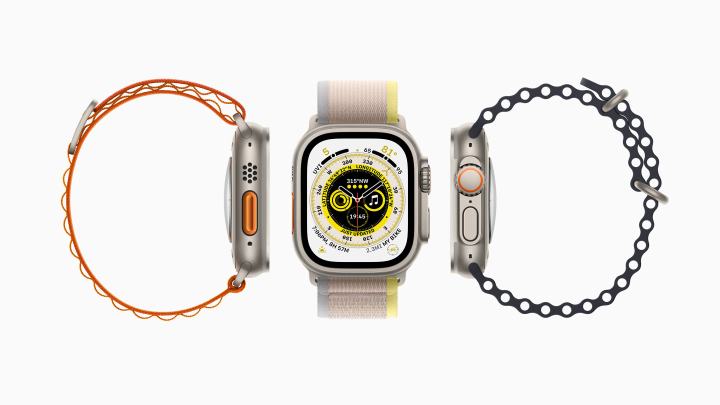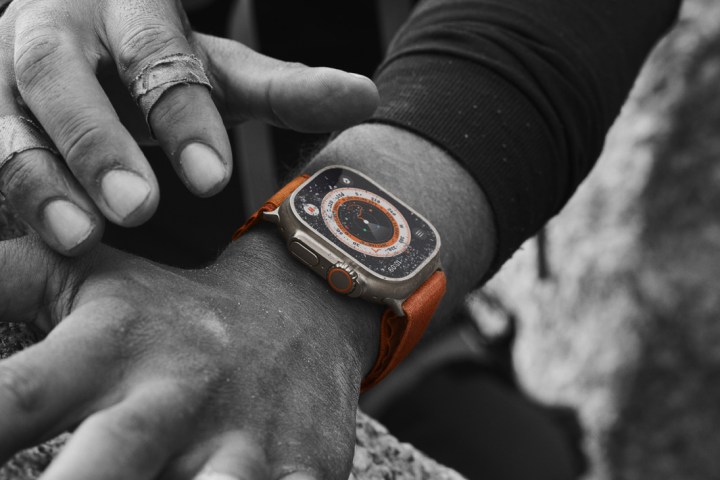After many months of speculation, Apple has finally unveiled the Apple Watch Ultra at its jam-packed Far Out event. Touted as “the most rugged and capable Apple Watch ever” by Apple’s Jeff Williams, this souped-up, ruggedized wearable is aimed at fitness fanatics and sports enthusiasts who might be dissatisfied with the regular Apple Watch.
Yet, despite all that, the Apple Watch Ultra has left me unimpressed. Don’t get me wrong, I was interested in it going into the event — I’m no extreme explorer, but I wanted to see what Apple could cook up for people who enjoy staying as active as possible. But Apple’s latest offering to the fitness market gets one thing wrong in an important way.
Life’s bumpy road

There’s no doubt Apple spent a lot of time and money researching what was required to make a truly great fitness and adventuring wearable, and there are plenty of impressive aspects to the Apple Watch Ultra. From the hard-wearing construction to the excellent software capabilities, the device is a step above the standard Apple Watch in many ways.
But there’s one thing that hasn’t changed since the very first Apple Watch was introduced in 2014: the relentless pursuit of more.
Just like the rest of the Apple Watch lineup, the Apple Watch Ultra wants you to do better every time you work out. Run faster, hike further, and burn more calories. The ideal workout history, in Apple’s eyes, is one on an upward trajectory of unremitting progress.
In many ways, this is a good thing. Building up your fitness can produce a wide range of positive effects and improve your overall well-being, and I’ve no doubt the Apple Watch Ultra will be a great tool in helping you do that.
But the problem is that it assumes life is a smooth journey along a perfectly level road, where potholes and obstacles are merely figments of the imagination. In this telling, every day you are able to meet the goals your Watch sets you, and every day your streak is maintained and extended. And if you’re fortunate enough never to get injured (or unfortunate enough to never go on vacation), that approach will probably work well for you.
Old habits die hard

The issue, of course, is that real life doesn’t often work like that. Sometimes you get injured or sick and can’t work out through no fault of your own. Should your wearable chastise you for not exercising when you’ve broken your leg? I don’t think so.
In fact, the Apple Watch Ultra is going to be used in situations where injury is more likely. Mountain climbing and scuba diving are hardly accident-free zones filled with cushions and kittens. But if you get put out of shape while using the

There’s another problem. These days, it’s accepted that people need to rest after strenuous exercise to avoid overworking their bodies. When you take a day to recover, your body has time to heal before the next round. If recovery days are good enough for professional athletes, they should be good enough for the rest of us.
The Apple Watch Ultra ignores all this. It wants you to push yourself hard every day, breaking your previous personal bests at every opportunity. But it never slows down and acknowledges that that might not be the best approach. Take the scientifically encouraged step of having a rest day, and your Apple Watch will punish you by breaking your streak.
Apple’s blind spot

I own an Apple Watch, and I work out every day because I’d lose my streak if I didn’t (and I’m too competitive to let that happen). While this has undoubtedly made me fitter, I wish my wearable took a different tack. Judging by the Apple Watch Ultra, that’s not likely to happen any time soon.
I’ve written about this before — about how the Gentler Streak app beats Apple at its own game. It lets you take rest days, set your status to sick or injured, and generally encourages a more realistic fitness outlook. If a small set of independent developers can make an app that takes the right approach to being active, why can’t Apple?
After all, you would think that a trillion-dollar company would have the resources to build a device reflecting the most up-to-date fitness thinking. But that’s apparently not the case. And until Apple updates its thinking, I’ll think I’ll pass on the Apple Watch Ultra.
Editors' Recommendations
- Nomad’s new iPhone case and Apple Watch band may be its coolest yet
- Why you shouldn’t buy a new Apple Watch right now
- 5 features I want in the Apple Watch Ultra 3
- Don’t buy a Galaxy S24 Ultra or iPhone 15 Pro Max. Do this instead
- You won’t believe how I improved my phone’s battery life




